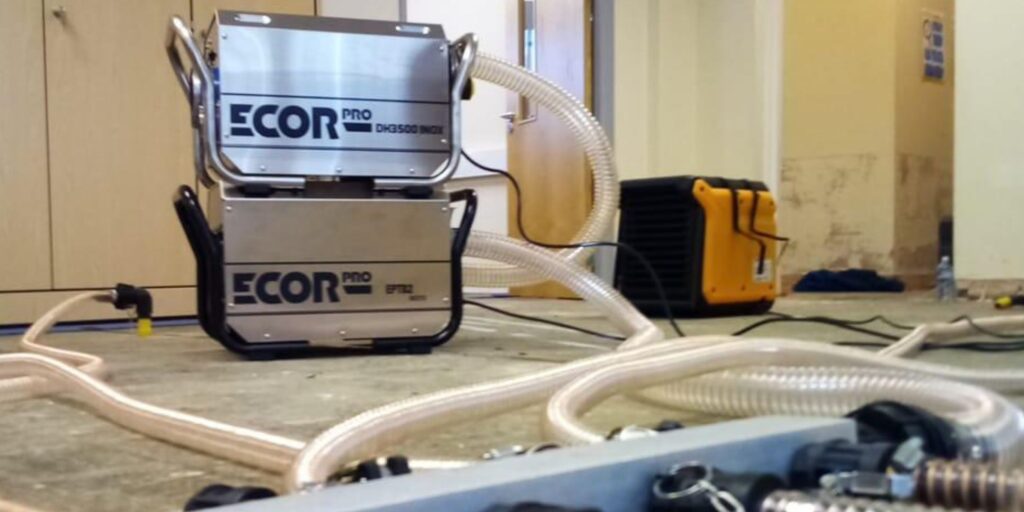A quote from the 17th century declares, “A place for everything and everything in its place”. The unknown author of that citation probably meant that everything should have someplace to be stored and that it should be returned to that place when it’s not in use. But when you look at it another way, it can also apply to water damage restoration. How so? Because as good as your equipment might be, it won’t do the best job for you unless it’s all positioned correctly, or “in its place”.
Your techs need to know that dragging dehumidifiers and air movers into a room and placing them randomly is not the way to get the best and the fastest results. Otherwise, your attempts to dry a water-damaged structure will be slow, uneven, and might cause additional damage. Air movers will, of course, be placed in those areas that will encourage adequate evaporation and circulation between each affected area. Dehumidifiers perform effectively in spots where there’s rapid evaporation. If you’re not achieving good circulation due to walls or other barriers, use multiple units to attain balanced humidity control and lessen secondary damage.
Dehumidifier Positioning Tips
Here’s some advice about dehumidifier placement that will help you control humidity in a structure:
- Space your dehumidifiers evenly all through a building to increase the amount and speed of moisture being eliminated. The more areas set up to capture moisture, the more effective the drying.
- You might believe that pointing an air mover to blow directly into a dehumidifier’s intake would speed up the drying process, but that is not true. Doing so increases the airflow over the dehumidifier’s coils and reduces its performance because it does not give the coils enough time to remove all the moisture they can from the passing air.
- By positioning dehumidifiers near the airflow of an air mover (not blocking it), you ensure that the dehumidified air is circulated immediately, thus increasing the unit’s efficiency.
- Placing dehumidifiers on expensive hardwood or other costly flooring can be risky. If they have not been maintained properly or a part fails and the unit leaks, you’ll end up eating the cost of replacing the flooring. If you do not have a choice, then have them sit in pans made for them to catch any errant drips and help eliminate further water damage.
- Make sure dehumidified air is not blowing on any hard, finished surfaces because that could cause the wood to overdry and crack.
It is also important to frequently check the atmosphere with a thermo-hygrometer to ensure you’re getting effective humidity control throughout the structure. That will tell you if any of the equipment needs to be moved.
Although a dehumidifier or air mover may have originally been “in its place”, that place will change as the structure dries so that you achieve even and rapid drying results.

